Physical Address
304 North Cardinal St.
Dorchester Center, MA 02124
Physical Address
304 North Cardinal St.
Dorchester Center, MA 02124
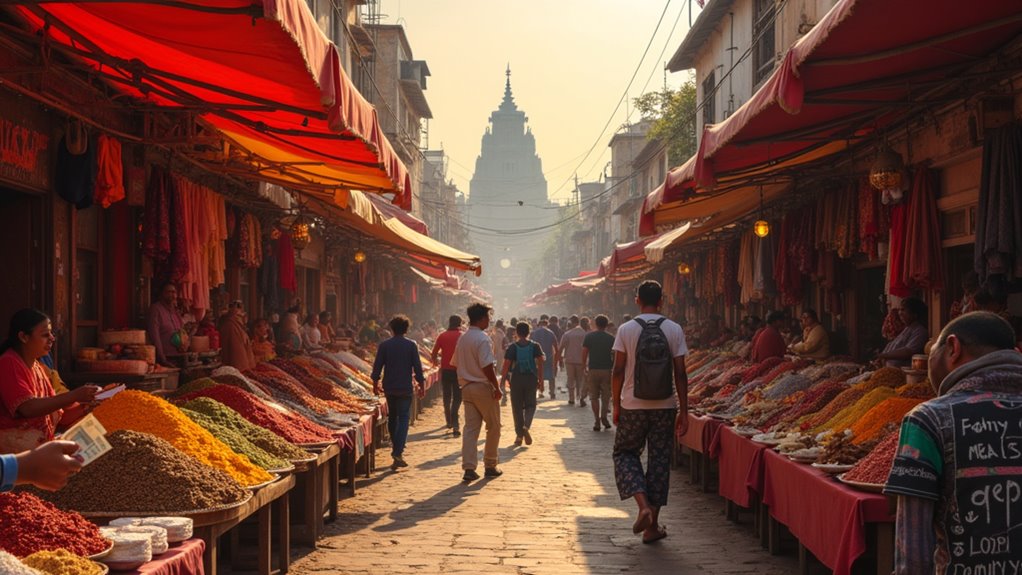
How budget-friendly is India really for travelers seeking authentic experiences without emptying their wallets?
India ranks among Asia’s most affordable destinations. You’ll find options for every budget, with daily expenses ranging from ₹1,283 ($15) for budget travelers to ₹9,493 ($111) for luxury experiences. Accommodation, food, and transport costs are surprisingly low—street food runs just ₹20-100 ($0.25-1.25), while budget stays start at $5 per night. Timing your visit during shoulder seasons like August or November can slash your costs by up to 50%. The following guide breaks it all down.
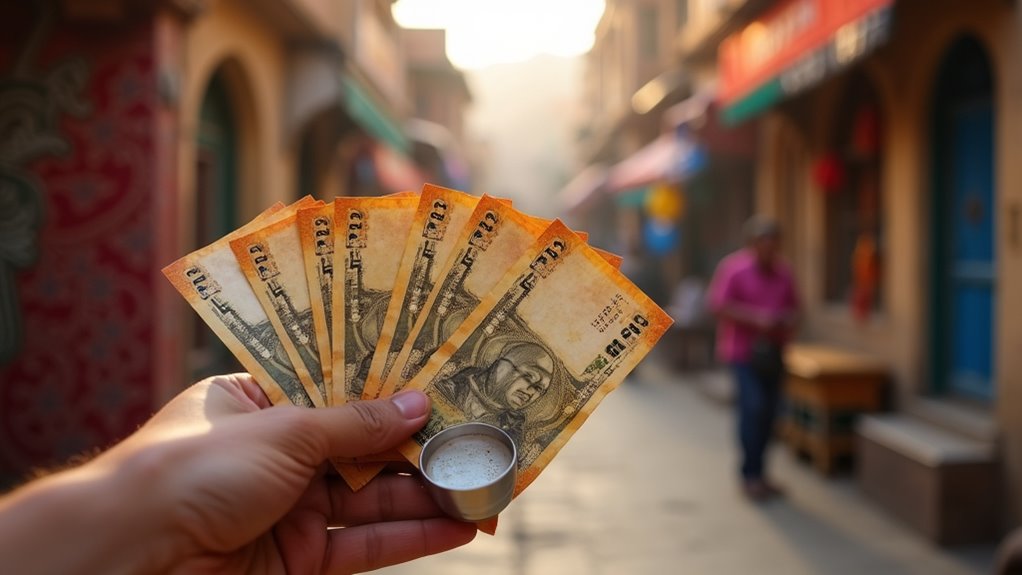
While many travelers dream of exploring India’s colorful markets and ancient temples, they’re often surprised by just how affordable this diverse country can be. You’ll find India ranks among Asia’s most budget-friendly destinations, with options for every wallet size.
Your rupees stretch remarkably far here. Hostels and guesthouses won’t break the bank, while public transport costs pennies compared to Western prices. Fill up on delicious local dishes for a fraction of what you’d pay for international cuisine.
Travel in India means luxury for less—where your money travels even further than you do.
Even entrance fees to most attractions won’t dent your budget considerably.
The numbers back this up too—tourism spending in India took a hit during the pandemic but is rebounding fast with an expected 8% growth rate through 2029. Smart travelers are increasingly planning their own trips, cutting costs even more significantly. Many travelers are now seeking authentic cultural experiences aligned with growing preferences for immersive travel across India’s diverse landscapes.
Your India travel budget depends entirely on how you like to spend money. If you’re pinching pennies, you can get by on just ₹1,283 ($15) daily—covering simple meals (₹50-200), cheap lodging (₹500-1,500), and local transport (₹10-50).
Mid-range travelers should plan for about ₹3,335 ($39) per day, which buys you better restaurants (₹200-500 per meal), comfortable hotels (₹1,500-3,500), and taxi rides (₹100-300). Remember that expenses vary significantly between major cities like Mumbai and Bangalore versus smaller destinations like Lucknow or Coimbatore.
High-rollers, expect to drop ₹9,493 ($111) daily for luxury hotels (₹5,000-20,000), fine dining (₹1,000-2,500 per meal), and private cars (₹5,000-10,000).
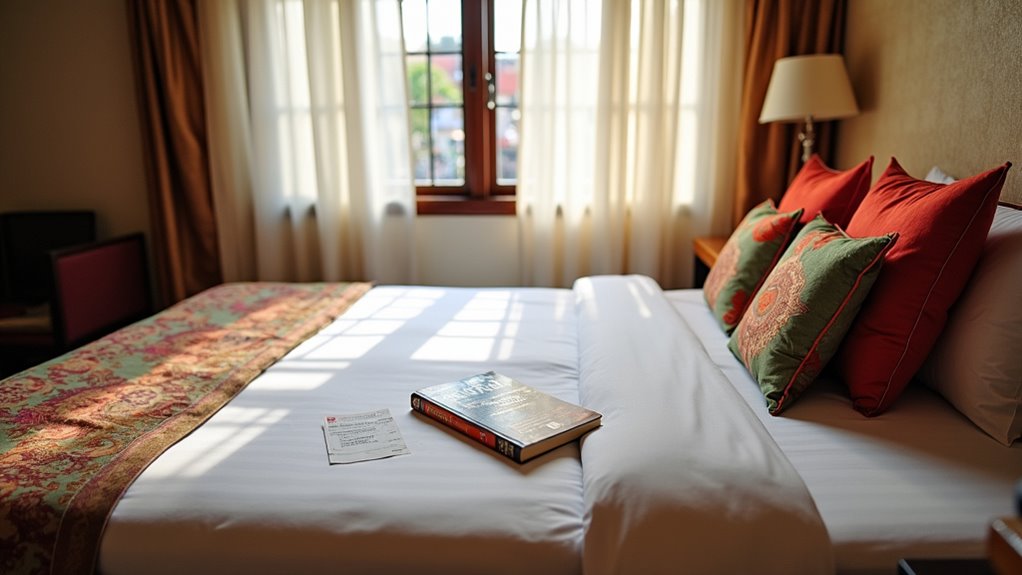
Finding the right place to lay your head in India can make or break your trip, especially when you’re watching your wallet. India’s accommodation landscape spans the full spectrum, with something for every budget.
At the low end, you’ll find hostels and guesthouses ($5-20/night) with basic amenities like shared facilities and Wi-Fi—perfect for backpackers.
Mid-range options ($20-100/night) offer more comfort with AC, TVs, and sometimes pools, ideal for families.
Splurging on luxury? The Leela Palace Chennai and other high-end hotels ($200-500/night) deliver stunning architecture and premium amenities. Most luxury hotels in India are currently priced 11% to 22% below their forecasted rates, making them more accessible for travelers planning in advance.
Students should check out growing PBSA options from providers like NestAway or Zolo Stays.
For hassle-free vacations, all-inclusive resorts bundle meals and activities, with Hoysala Village Resort being a more affordable option.
From street-side samosas to lavish thali feasts, Indian cuisine offers a delightful journey for your taste buds without emptying your wallet. With food inflation at just 1.78% as of April 2025 (down from 6% in January), now’s a great time to explore India’s culinary landscape.
Savor India’s vibrant flavors at remarkably affordable prices during this period of low food inflation.
You’ll find incredible value across the country:
This current rate marks the lowest inflation since October 2021, making it an economically favorable time for food tourism in India.
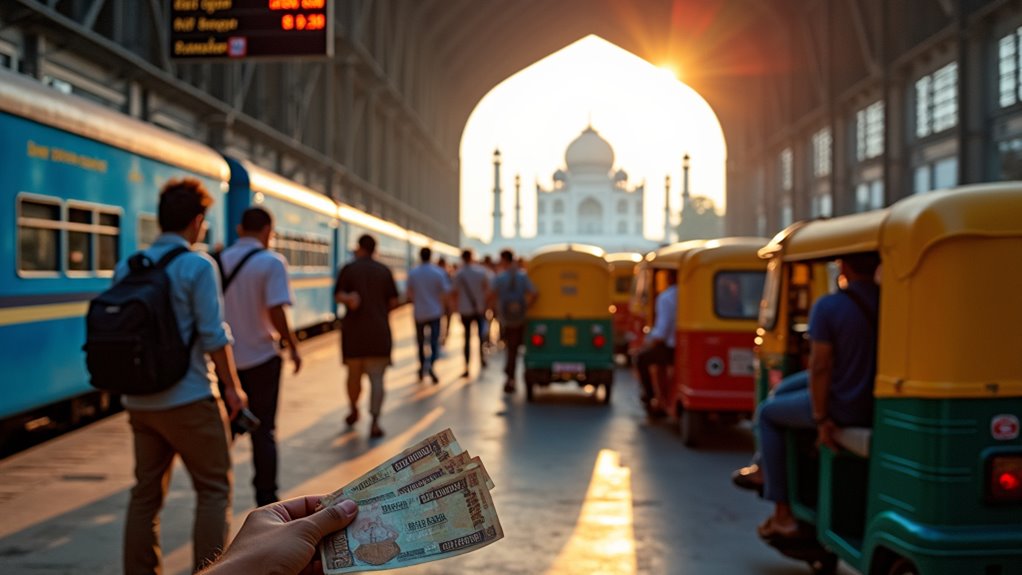
After savoring India’s affordable culinary delights, you’ll need to explore how to get from one food adventure to the next. India’s transportation options are as diverse as its cuisine—and just as budget-friendly.
For city exploration, metros in Delhi and Mumbai will zip you around for less than a dollar per trip. Auto-rickshaws and cycle-rickshaws offer cheap short hops, though always negotiate prices upfront. Local buses are dirt-cheap but often crowded. The government’s efforts to reduce logistics costs from the current 14-16% to 9% will likely make transportation even more affordable in the coming years.
For longer journeys, India’s extensive rail network is your best friend. Book in advance and choose from budget sleeper class to more comfortable AC coaches.
Ride-sharing apps like Ola and Uber beat traditional taxis on price, while domestic flights save time on long distances but cost more.
Once you’ve arranged your transportation around India, you’ll need to budget for the country’s incredible attractions. The pricing structure follows a two-tier system, with foreigners typically paying more than locals. Don’t let this discourage you – even the premium fees are reasonable by international standards.
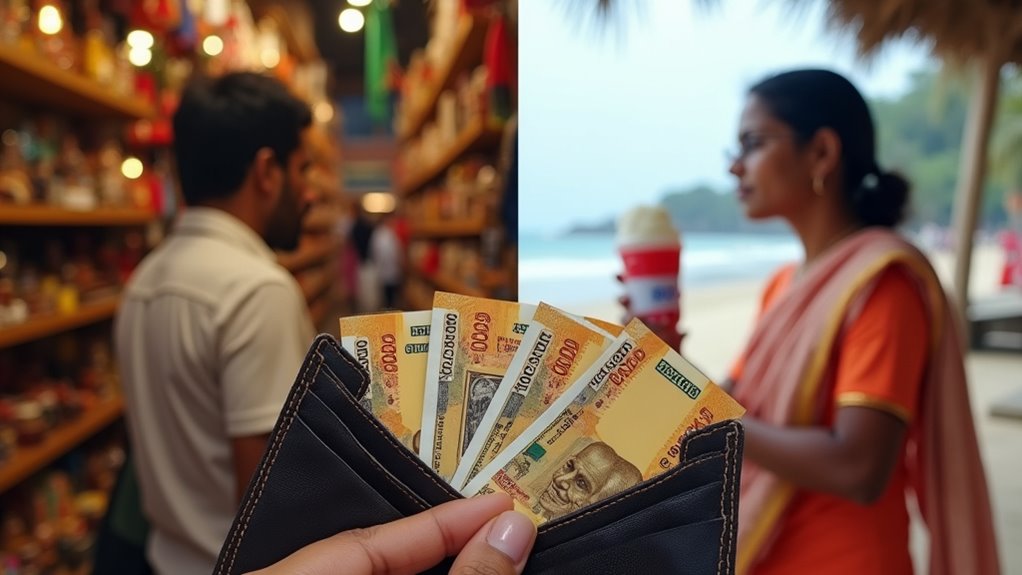
Budgeting for your Indian adventure requires understanding the regional price variations that’ll affect your wallet. You’ll find accommodation costs particularly higher in Mumbai (₹30,000-60,000 for 1BHK) compared to Delhi (starting ₹15,000) or most southern cities.
Food costs tell a different story. South India delivers more bang for your buck with affordable rice-based dishes and vegetarian options, while northern three-course meals in Delhi can set you back ₹2,000 for two.
Transportation costs remain comparable across regions, though southern cities often offer cheaper auto-rickshaw options for daily travel. Delhi’s monthly transport runs ₹1,000-7,000, similar to Bangalore.
The south generally boasts better economic development and infrastructure, often translating to more consistent pricing and fewer tourist markups than you’ll encounter in northern tourist hotspots. For a comfortable living experience as a tourist, you’ll need approximately ₹40,000-₹50,000 monthly in metropolitan areas regardless of the region you choose to visit.
Whether you’re backpacking through India on a shoestring or simply trying to stretch your rupees further, smart travelers know the country offers incredible value for money if you play your cards right. India rewards the savvy visitor who doesn’t mind trading a bit of comfort for authentic experiences.
India rewards those who embrace its authentic soul with unforgettable experiences that cost little but deliver richly.
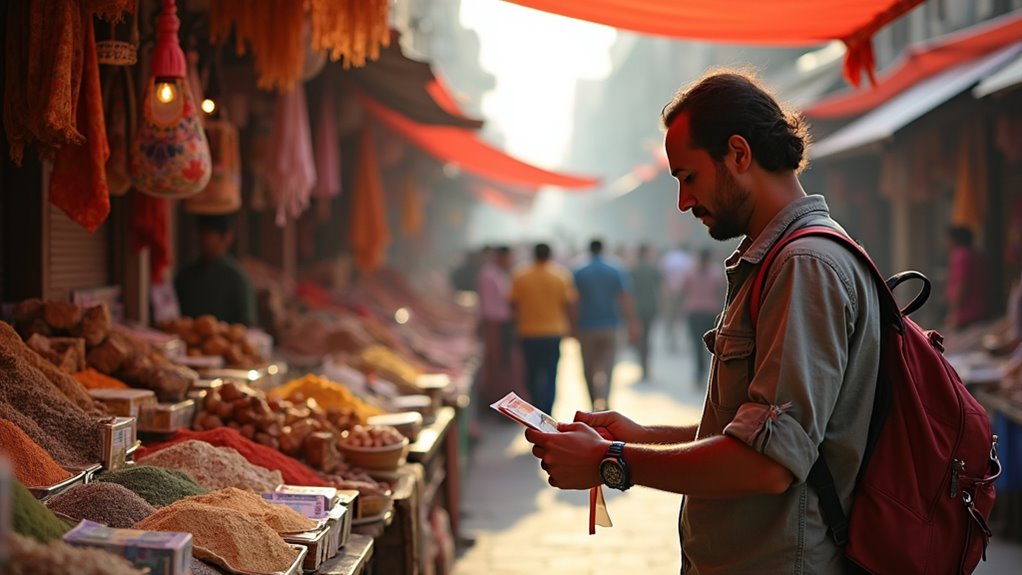
Timing your visit to India can make or break your travel budget, with prices swinging wildly throughout the year based on tourist seasons and weather patterns. You’ll pay premium rates during peak seasons (June 14-July 30 and December 10-24), when hotel prices and airfares can double.
For serious savings, target April through June when accommodation costs plummet by nearly 50%. The shoulder seasons (August and November-early December) offer a sweet spot between good weather and reasonable prices. Booking at least 4 months in advance is recommended during these periods to secure the best fares.
If you’re flexible, avoid winter months in major cities when hotel tariffs skyrocket. Northern mountain regions like Himachal Pradesh offer cooler retreats during hot months at better rates.
India won’t break the bank if you’re smart about it. Your daily costs can range from $20 to $100 depending on your style. Skip the fancy digs, embrace street food, and haggle like you’re trading beanie babies in the ’90s. Travel during monsoon season for better deals. Remember, this jewel shines brightest when you explore like a local, not a tourist with deep pockets.